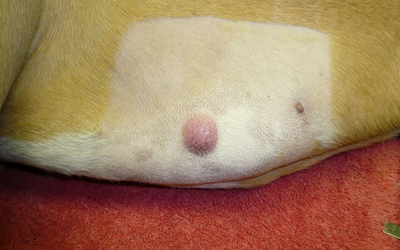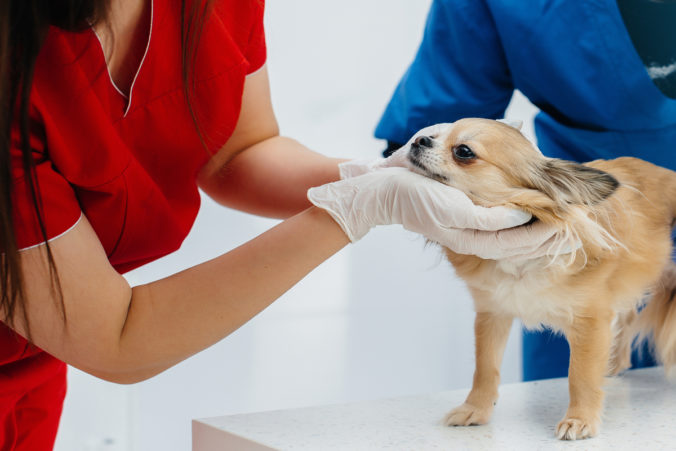SYMPTOMS OF CANINE MAST CELL TUMORS
|
Symptoms can vary depending on the location of the tumor. Some dogs present for just a mass on or under the skin whereas others have clinical signs related to the chemicals that are released by the tumor that may cause bruising, bleeding, swelling, inflammation and stomach ulcers. Affected dogs may experience fatigue, decreased appetite, increased respiration, diarrhea, or vomiting. Also, if the MCTs are disturbed and those previously-mentioned mediators leak out, the dog might show shock-like symptoms; severe lethargy, vomiting, pale gums, vomiting, decreased appetite, or collapse, and/or stomach ulcers. Mast cell tumors can look like anything and are often mistaken for benign fatty growths called lipomas.
|
DETECTION AND STAGING
|
A biopsy technique called a needle aspirate can be quite helpful in determining a MCT from any other benign or malignant process. The cells have a certain appearance which makes them easy to discern, making an initial diagnosis possible. Still, the sample will most likely be sent to the lab for a more definite finding, and to establish the next course of action.
Staging will find out the overall health of the dog in question as well as determine the stage of the cancer and whether or not it has spread to several areas. Everything depends on each individual case as to what is done. Minimal staging usually consists of routine blood work, urinalysis, and a lymph node evaluation. Maximum staging includes additional blood work, an ultrasound, and aspiration and cytology of certain internal organs. Again, the determination as to what is done depends on the health of the patient, the size and location of the tumor, the grade of the tumor (explained below), the number of tumors detected, and the lymph node status. |
TREATMENT
|
Unless the tumor is too big to remove or has spread systemically, almost all MCTs require surgery. There are two grading systems.
The first divides the tumors into those that are unlikely to spread (grade I), moderately likely to spread (grade II) and highly likely to spread (grade III). Grade I tumors are often cured with surgery whereas grade III tumors may be best treated with appropriate surgery and additional treatment to treat and prevent spread of the tumor. A more recent, simpler grading system is a two tier system: Those tumors that are unlikely to spread and that can and should be cured with appropriate local therapy alone, or those that have a high risk of spreading and thus can be difficult to control unless the local tumor is treated and additional medicines are used to delay or prevent tumor regrowth and spread. |
FINALLY
Remember, dogs tolerate both chemotherapy and radiation better than we do. Quality of life is of utmost importance. There are drugs that can be given to effectively counteract any adverse affects an individual dog might have so they will be comfortable throughout their treatment.




